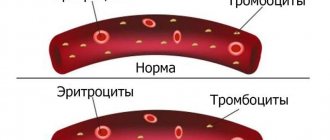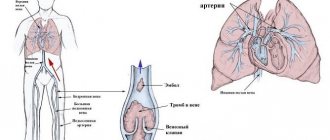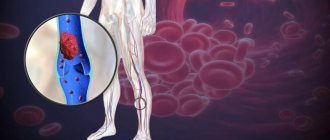What is a bruise
The occurrence of severe redness or hemorrhage in the eye is always associated with damage to small blood vessels. Doctors distinguish several types of pathology, depending on the location of the bruise itself:
- Hyphema. This is the name for the accumulation of blood in the anterior chamber of the eye - between the iris and the cornea. Most often, hyphema is the result of blunt trauma. The pathology is characterized by blurred vision and intense pain. This kind of bruising in the eye requires immediate medical attention.
- Subconjunctival hemorrhage. With this pathology, the vessels of the mucous membrane of the visual organ are injured. Typically, such bruising appears suddenly and for no obvious reason.
- Hemophthalmos. This is a bruise located in the vitreous humor inside the eye. In other words, hemophthalmos is internal hemorrhage in the visual organ. With this pathology, patients complain of severe fog in front of the affected eye. With complete hemophthalmos, loss of visual function occurs. Hemophthalmos is considered a severe and very dangerous eye injury. In the absence of appropriate therapy, complete loss of vision cannot be ruled out, which will be irreversible.
- Retinal bruising. Occurs against the background of bleeding from the retinal vessels. In fact, this part of the eye is extremely thin and sensitive. So even minor bleeding can lead to severe deterioration of vision and the appearance of retinopathy.
Prevention
Maintaining a work-rest schedule will help prevent hemorrhages in the eye. You should avoid prolonged exposure to computer and TV monitors. It is recommended to take breaks periodically, this will help reduce the load on the visual organs.
Lifestyle also plays an important role; it is necessary to give up bad habits, smoking, and alcohol. It is recommended to take multivitamins, and your diet should be varied. You should also avoid exertion and lifting heavy objects. It is necessary to undergo regular ophthalmological examinations; the doctor will be able to identify the problem at an early stage of its development.
Signs of pathology
The clinical picture of the anomaly depends on where exactly the hemorrhage occurred. Blood may even completely fill the entire eye. Associated symptoms also depend on the type of hemorrhage.
So, with hyphema, the entire anterior chamber of the visual organ is filled with blood. If a person is lying down, the liquid will be distributed evenly, and if he is in a vertical position, it will simply settle at the bottom. How much vision is affected depends entirely on the amount of blood.
With hemophthalmia, blood fills the entire vitreous body. The bruise in the eye turns burgundy and takes the shape of the lens. If the vitreous body is completely blocked by blood, then visual function will be lost.
When injured, the victim may experience flashes of light in front of the injured eye. Sometimes they will be replaced by dark spots.
It is noteworthy that, apart from the bruise in the eye itself, there are no other signs of a problem. Only in some cases, with damage to large vessels, pain may occur. If the hemorrhage is extensive, the victim may experience a feeling of increased pressure in the visual organ.
Hemorrhage as a result of trauma
The severity of the damage affects the quality of vision in the eye: sometimes it does not suffer at all, and sometimes it temporarily worsens or disappears altogether.
Doctors distinguish several degrees of concussion:
- First. With such an injury, the bruise in the eye is insignificant, the eyeball remains intact, and vision is not affected. In this case, the hemorrhage disappears quite quickly and the person recovers completely.
- Second. The bruise in the eye from the blow is clearly visible, but the tissue is not severely damaged, and the victim himself sees light and feels deterioration in vision. Proper treatment allows you to completely restore visual function.
- Third. At this degree, death of the eyeball occurs. It is impossible to restore vision after such an injury, since the structure of the eye undergoes irreversible changes.
Any damage to the visual organ should be taken extremely seriously. After all, even a minor injury can lead to dangerous consequences. In this case, there is no point in delaying a visit to the doctor.
Bruising as a result of pathologies
The eye is an organ that is abundantly saturated with blood, and therefore has a branched vascular network. Some diseases can affect the permeability and elasticity of the eye vessels. That is why hemorrhages in one or even both eyes at once are a frequent and sometimes inevitable symptom of serious illnesses.
What causes bruises in the eyes? There could be many reasons for this:
- hematological defects - anemia or acute leukemia;
- diabetes mellitus - during the development of retinopathy;
- atherosclerosis;
- coagulopathy - problems with blood clotting;
- hypertension;
- myopia;
- collagenosis - lupus erythematosus, vasculitis, scleroderma;
- pathologies of the vessels themselves - iritis or uveitis;
- retinal diseases;
- tumors inside the eye;
- inflammation of the mucous membrane;
- sudden increase in blood pressure;
- severe vomiting or cough;
- use of blood thinning medications;
- lack of vitamin K.
Frequent bruising even when you feel normal is a reason to contact an ophthalmologist for an examination.
Preventing bruises
To ensure that hematomas under the eyes no longer appear, it is recommended to follow several rules:
- Quit smoking - nicotine and tarry substances contribute to hypoxia of the skin.
- Avoid alcohol – alcohol dehydrates the body and disrupts metabolism.
- Drink more fluids - drink 2 liters of clean water per day.
- Avoid stress and relax more often. For relaxation, choose places where toxins are actively removed from the body - steam room, aromatherapy, yoga, meditation.
- Go for walks every day. A sedentary lifestyle leads to the fact that oxygen ceases to flow to tissue cells.
- Get medical examinations regularly. And when chronic diseases are identified, treat them in a timely manner.
In order to accurately identify why bruises appear, it is advisable to consult a hematologist. He may prescribe a procedure to study blood clotting and check it for various indicators. As a result, a conclusion will be drawn about why bruises appear on the eyelids, and how this problem can be solved.
When bleeding is not dangerous
Depending on the course of the pathology and the cause, treatment of hemorrhage in the eye may not be required.
Comfortable lenses, which often replace regular glasses, can also cause bruising. At least if they are chosen incorrectly. And all because mechanical irritation of the eye gradually leads to damage to small vessels. The result is minor bruising. But you shouldn’t be afraid, because the hemorrhage will quickly disappear if you temporarily abandon the lenses and choose others.
During childbirth, a woman’s body endures unimaginable stress, which is often accompanied by bruising in the eyes. How to remove blood stains? There is no need to do anything - the hemorrhage will gradually disappear on its own, without any treatment.
A variety of physical activities associated with work or sports can also lead to bruising in the eyes. In this case, it is enough just to reduce their intensity, and the spots will disappear on their own.
A long flight on an airplane, during which pressure changes frequently, can also lead to injury to small vessels and, accordingly, hemorrhage. In this case, you shouldn’t worry either, because after a few days it will disappear on its own.
The best drops for hemorrhage
Bleeding in the eye usually does not pose a serious threat to vision and goes away on its own after the provoking factor is eliminated. To quickly eliminate the unpleasant phenomenon, local remedies can be prescribed. What to drip in case of such a phenomenon? There are no special effective remedies for intraocular hemorrhage, however, for minor lesions, the following ophthalmic drops are recommended.
Read in a separate article: Albucid for conjunctivitis in adults and children
Emoxipin
The drug contains the active substance methylethylpyridinol, which is why Emoxipin eye drops have the following actions:
- antioxidant effect;
- strengthening vascular walls;
- improvement of blood clotting;
- reducing the risk of blood clots.
Emoxipine effectively eliminates hemorrhages, but can cause an allergic reaction, burning and itching, and conjunctival hyperemia. The medicine must be used for 30 days, instilling 1 drop into the conjunctival sac 4 times a day. If the solution is combined with other local agents, then it should be used last.
Taufon
The main active ingredient of the drug is the amino acid taurine, which promotes the regeneration of damaged tissue of the eyeball and normalization of the functions of cell membranes. The medicine also normalizes metabolism and improves the conductivity of nerve fibers, eliminating hemorrhages. Often prescribed for injuries from impact. May cause an allergic reaction. Directions for use: instillation into the conjunctival sac, 1 drop 2-3 times a day for a month.
Vixipin
The composition of the drug is similar to Emoxipine, therefore it allows achieving such pharmacological actions as strengthening blood vessels and preventing thrombosis, thereby eliminating hemorrhage. The medicine is not suitable in case of individual intolerance, during pregnancy and lactation. Vixipin should be instilled 1 drop up to 4 times a day for 30 days. Sometimes the course of treatment is extended to six months.
Albucid
Antibacterial drops with anti-inflammatory action and bacteriostatic activity. They are used for inflammatory processes, conjunctivae and bacterial lesions, for resorption of hemorrhages in the eye. To treat pathology in children, a 20% solution is used, and in adults - 30%. Albucid should be instilled 2 drops up to 5 times until symptoms disappear. The medicine is well tolerated.
Potassium Iodide
The drug contains the antimicrobial substance potassium iodide, which promotes the resorption of blood clots and infiltrates, and also has antiseptic and antiatherosclerotic properties. 1 drop is instilled up to 2 times a day for 14 days.
Potassium Iodide is not suitable for people with thyroid dysfunction, nephrosis and nephritis.
Diclofenac
The active ingredient of the drug is the NSAID sodium diclofenac, which effectively eliminates hemorrhages, reduces swelling and hyperemia, and relieves pain. During treatment, side effects may occur in the form of burning, lacrimation, hyperemia and an allergic reaction. Do not combine with medications based on acetylsalicylic acid. Apply 1 drop up to 4 times a day for 2 weeks.
Hyphenation
an auxiliary product whose active substance is hydroxypropyl methylcellulose, which provides tissue hydration and protection. In combination with other drops, Defislez promotes rapid resorption of bruises and regeneration of affected tissues. You need to instill the medicine 1-2 drops 4-8 times a day at regular intervals.
Visine
Visine helps reduce blood stains in the eye due to tetrizoline, which is contained in these eye drops. The vasoconstrictor effect can last up to 8 hours. The drug is allowed to be used by adults and children from two years of age after consultation with the attending physician.
What not to do
If a bruise is detected in the eye, you do not need to:
- rubbing your eyes hard, this only aggravates the situation and increases hemorrhage;
- use eye drops without a doctor's prescription;
- wear contact lenses;
- independently refuse taking medications without prescription from an ophthalmologist.
Keep in mind that only subconjunctival hemorrhage can go away without negative health consequences. In all other cases, without appropriate treatment, the risk of complete irreversible vision loss is extremely high. After all, the occurrence of such a symptom may indicate a serious pathology in the visual system or even in the entire body.
Useful video
Symptoms of diseases and ailments that occur on the face. If they are detected, you should check your health status and exclude provoking factors and illnesses.
Author's rating
Author of the article
D. Aleaxndrescu
Articles written
2031
about the author
Was the article helpful?
Rate the material on a five-point scale!
( 9 ratings, average: 4.44 out of 5)
If you have any questions or want to share your opinion or experience, write a comment below.
Treatment
Having identified a bruise in the eye, you should not worry only in one case: if the organ does not hurt and your vision is not affected. In all other situations, you should definitely visit a doctor who can determine the causes of the pathology and choose the optimal treatment tactics.
Subconjunctival hemorrhage most often does not require special therapy and disappears on its own.
If you experience severe discomfort or even pain, your ophthalmologist may prescribe you anti-inflammatory or decongestant drops. If an eye infection is detected, appropriate antiviral or antibacterial drugs are prescribed. How long does it take for a bruise in the eye to last? Typically, subconjunctival hemorrhage disappears within two weeks without any complications.
In other situations, the patient may even require inpatient treatment.
If the eyeball is filled with blood, an examination should be performed before therapy to determine the causes of the pathology. This is an extremely important nuance, since knowledge of the problem will prevent the development of relapse, complications and complete loss of vision.
First aid for hemorrhage in the eye consists of the fastest possible diagnosis and subsequent therapy. To completely eliminate the problem, the patient should remain completely at rest, follow all the doctor’s instructions and follow the recommended procedures. In addition, the injured eye must be isolated from the environment.
Cold compresses and bandages with antiseptic solutions should be applied to the damaged organ as often as possible. At the same time, drug therapy is used, which allows for recovery as quickly as possible.
If the eye is noticeably red or hemorrhaging appears in it, but there is no pain or discomfort, pharmaceutical drops and folk remedies are most often used. Such therapy usually allows one to quickly eliminate pathological symptoms.
Drug treatment
Most often, ophthalmologists recommend a standard treatment regimen to patients:
- intramuscular administration or oral administration of vitamin complexes;
- intravenous administration of lidase and glucose - they contribute to the complete resorption of infiltrates and bruises;
- preparations to impart elasticity and strength to blood vessels;
- hemostatic agents;
- intravenous administration of protease enzymes - prescribed as desired.
At home, drops can be used for hemorrhage in the eye:
- "Taufon";
- "Naphthyzin";
- "Octilia";
- "Okumetil";
- "Visine."
All of these are vasoconstrictor drugs that prevent blood from leaking through the vascular walls. If there is a bruise in the eye, drops help to quickly relieve even severe redness.
In more severe cases, surgery may be performed. Doctors usually resort to this procedure for serious damage to the vitreous body and retina. During the operation, all blood clots are removed from the eye cavity.
How to quickly remove a bruise in the eye? There are no medications that would completely eliminate hemorrhage today. If surgery does not solve the problem, it is quite possible to get by with rest for the eyes and taking vitamins.
Drugs can be prescribed not only for treatment, but also for the prevention of hemorrhages. To prevent bruising, doctors recommend taking regular vitamin C. This element helps soften the vascular walls, making them more elastic.
If during the diagnosis the patient was diagnosed with hyphema, it will be possible to do without special procedures. As a rule, with such a pathology, doctors prescribe special drops for hemorrhage, for example, “Potassium iodide 3%”. They need to be used three times during the day.
The course of therapy should last 10 days. If the pathological symptoms do not disappear during this time, the patient is recommended to undergo surgery.
List
Unfortunately, today there are no effective drugs that can combat ocular hemorrhage. For mild lesions, the doctor may recommend complete rest and the use of certain eye drops that have a general strengthening and health-improving value. These medications stimulate metabolism in damaged tissues and their regeneration, thus promoting their restoration and renewal.
Such funds include:
- Eye drops Potassium iodide 3%. The main active ingredient is potassium iodide, which has antiatherosclerotic and antimicrobial effects. One of the main drugs used in the treatment of damaged eye vessels. In addition to the antiseptic effect, it promotes the resorption of hemorrhages and has antifungal activity. The drug is not prescribed to patients with impaired thyroid function, with a diagnosis of nephritis or nephrosis, with certain skin lesions, during pregnancy and lactation, and newborn children;
Instructions for use of Potassium Iodide eye drops can be found here.
- Emoprox 1%. The main active ingredient is methylethylpyridinol hydrochloride, which has a number of medicinal properties: angioprotective (vasodilator), antiplatelet (prevents the formation of blood clots), antihypoxic (increases resistance to hypoxia), antioxidant (suppresses oxidation). Contraindications include individual intolerance, as well as periods of pregnancy and lactation;
- Emoxipin drops 1%. An analogue of Emoprox, with the same active ingredient. Stimulates the resorption of hemorrhages, helps strengthen vascular walls, and improves rheological parameters of blood. The list of contraindications is the same as that of the analogue;
- Diclofenac drops 0.1%. The main active ingredient is diclofenac sodium, which has analgesic and anti-inflammatory effects. Used as part of complex therapy for penetrating or blunt eye injuries. In case of hypersensitivity to the components of the drug and other NSAIDs, treatment with Diclofenac is not carried out, as well as with its analogues: Diclof, Naklof;
- Taufon 4%. The active substance is taurine, a sulfur-containing amino acid formed in the body during the conversion of cysteine. It is a stimulator of regenerative and reparative processes in case of injuries, restoration and normalization of metabolism. The only contraindication is individual intolerance; use with caution is recommended during pregnancy and lactation, as well as for children under 18 years of age; You can learn about the use of Taufon eye drops in the article.
- Hyphenation. The main active ingredient is hydroxypropyl methylcellulose, which provides high viscosity to the medicinal product, as a result of which the drug covers the surface of the eyeball with a film that lubricates and softens the cornea. According to the instructions of Defislez, the consequence of using the drops is the complete restoration of eye tissue within 2-3 weeks. Significant improvement is achieved already on days 3-5;
- Visine 0.05%. The drug belongs to the group of alpha-adrenergic agonists and is designed to eliminate eye irritations of various nature: physical, chemical, allergenic. Contraindications to the use of the drug are hypersensitivity to its components, corneal dystrophy, angle-closure glaucoma, children under 2 years of age.
Determining the extent of damage, as well as drawing up a treatment regimen for hemorrhage in the eye, is the prerogative of only an ophthalmologist. Even if the lesions are minor, a preventive examination has never harmed anyone, and the benefits from it can be invaluable.
Treatment at home
Cold compresses and herbal infusions are considered the most effective for bruises in the eyes. Alternative medicine offers several effective recipes to solve this problem. By the way, all of them can be used for bruising in the eye in newborns.
- Compress with tea leaves. Prepare strong black tea, let it cool and soak a cotton pad in it. Apply damp cotton wool to the damaged eye for 15-20 minutes.
- Compress with chamomile. Pour boiling water over the dried flowers, let the product cool and brew. Then strain the resulting tea, soak a bandage or cotton wool in it and apply it to the eye. Leave the compress on for half an hour.
- Lotion with cottage cheese. Wrap the milk product in a bandage and apply it to the injured eye. The same compress using serum will be no less effective.
- Lotion with cabbage. The cabbage leaf must be crushed to a puree. The resulting paste should be wrapped in a bandage and applied to the eye. You can use freshly squeezed cabbage juice in the same way. This compress should be done several times a day to get a quick effect.
All of these remedies have proven themselves in the treatment of bruises in the eye. In a child, hemorrhage can be eliminated using any of them. The main thing is to follow all the rules for using the chosen product.










